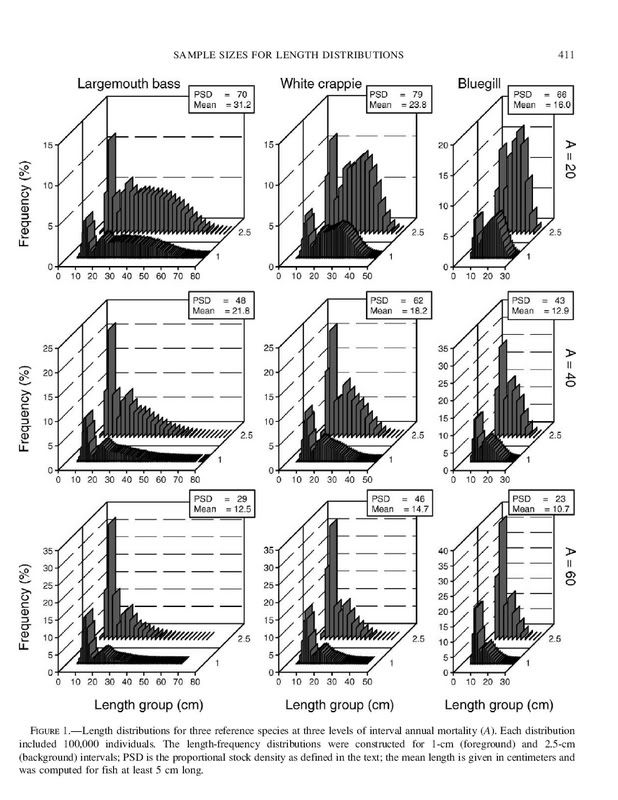Population Assessment
New article with pics for your evaluation. Note the annual morts and size distribution of the fish.
Author intro --Length analysis is a common practice in fish stock assessment. The length distribution of a fish population at any point in time reflects the interactions of recruitment, growth, and mortality, which, in turn, manifest links with the biotic and abiotic environments. Thus, length data provide insight into the dynamics of fish populations and can assist in identifying population difficulties such as inconsistent year-class strength, slow growth, excessive mortality, and inadequate food or habitat.
Transactions of the American Fisheries Society 136:409415, 2007
Copyright by the American Fisheries Society 2007
Approximate Sample Sizes Required to
Estimate Length Distributions
L. E. MIRANDA*
U.S. Geological Survey, Mississippi Cooperative Fish and Wildlife Research Unit,
Post Office Box 9691, Mississippi State, Mississippi 39762, USA
Abstract.The sample sizes required to estimate fish length were determined by bootstrapping from
reference length distributions. Depending on population characteristics and species-specific maximum
lengths, 1-cm length-frequency histograms required 3751,200 fish to estimate within 10% with 80%
confidence, 2.5-cm histograms required 150425 fish, proportional stock density required 75140 fish, and
mean length required 75160 fish. In general, smaller species, smaller populations, populations with higher
mortality, and simpler length statistics required fewer samples. Indices that require low sample sizes may be
suitable for monitoring population status, and when large changes in length are evident, additional sampling
effort may be allocated to more precisely define length status with more informative estimators.
